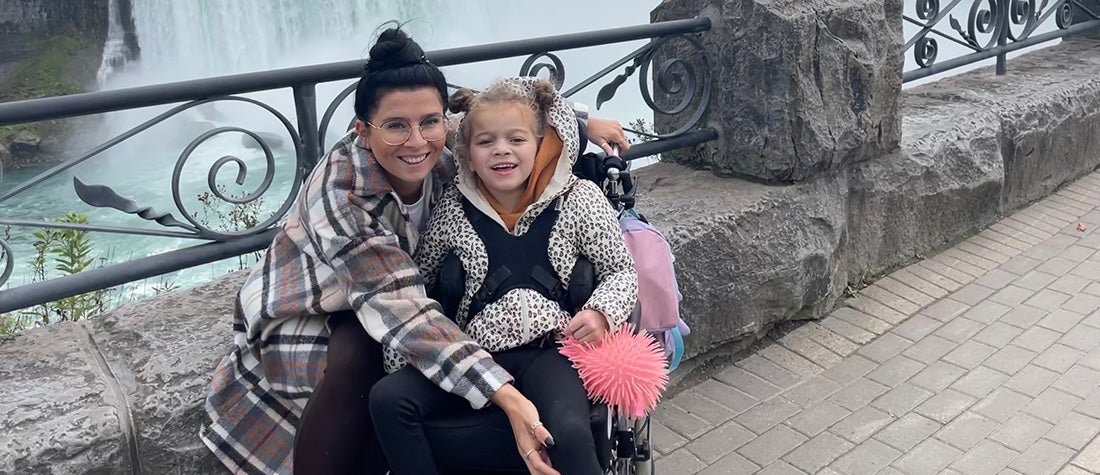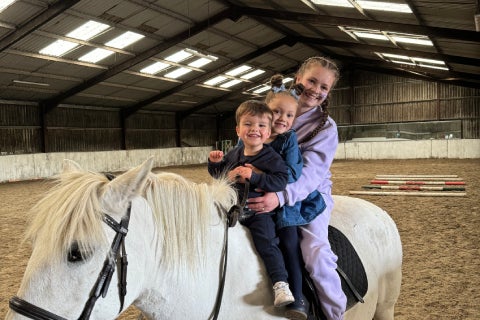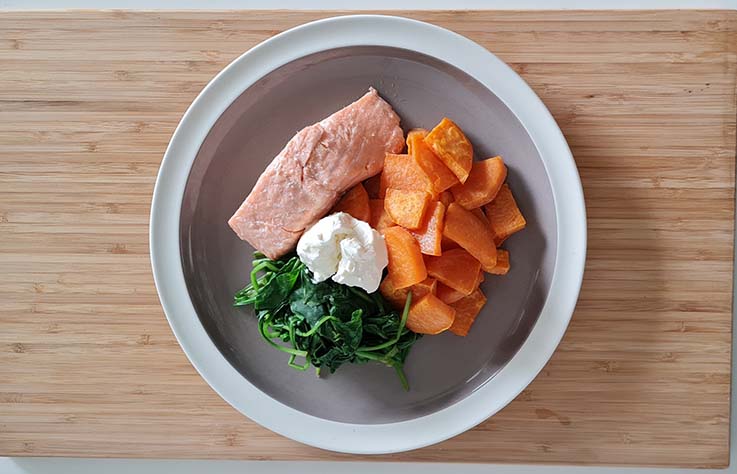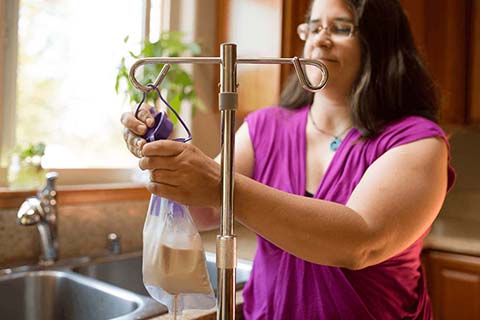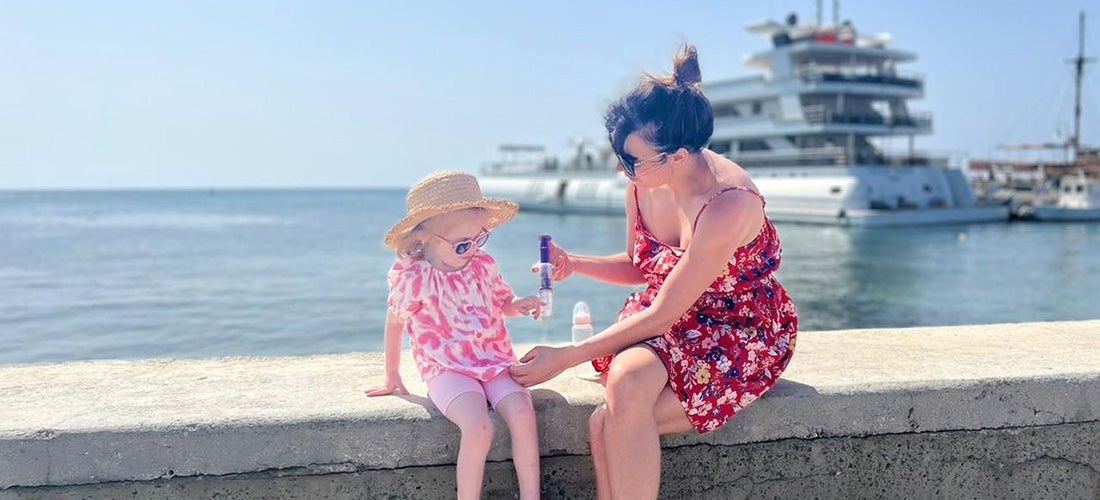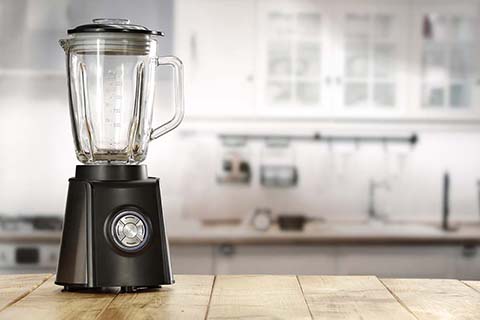Kerry & Mila: How we travel with a feeding tube
Kerry shares how she and her tube fed daughter, Mila, navigate travelling abroad and keep the experience as stress-free as possible.
Contributing family: Kerry (mum of 6-year-old Mila)
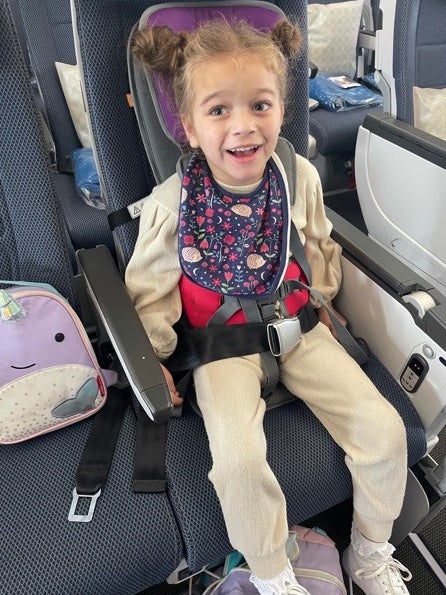
Meet Mila
Age: 6
Feed Via: Jejunum
Fun Fact: Mila is the biggest thrill-seeker, she goes on the biggest rollercoasters we can find and
laughs throughout!
Travelling with children can be very stressful. Travelling with a disabled child that is tube fed, well that’s a whole other ball game! My daughter is called Mila, she’s 6 and has dystonic cerebral palsy. Mila also has a feeding tube which she is fully dependent on, she is fed into her jejunum (small bowel) via a feeding pump.
Myself and Mila travel several times a year (in the UK and abroad), mainly to access different therapies. We often do it alone, and I won’t sugar coat it, the whole experience is intense; from the day I start packing until I arrive at our accommodation, when I can finally relax. However, due to the amount we have travelled, I’d like to think we’ve experienced most scenarios tube feeding families may have questions about before travelling. Therefore, I’d like to share some helpful tips for travelling with a tube fed child and hopefully make some of your journeys as stress free as possible!
Being a parent of a child that is tube fed requires a lot of organisation, even just in normal day to day life. Having a list to work from every time you travel makes life a lot easier, which you can tweak for each trip.
Before you fly:
Contact special assistance if you require help on and off the aircraft, even if it’s just with all your luggage. Special assistance can also help direct you to quieter sections of security, if you have a lot of liquids etc this process can be made a lot less stressful.
Special Assistance is a service provided at airports for those with disabilities/medical conditions/tube feeding equipment that may need assistance getting through the airport and on/off the aircraft. This service is free of charge and is there to ensure a less stressful journey. There are different levels of support depending on needs, if you contact your airlines special assistance line, they will be able to book this for you.
- If you are using a feeding pump throughout the flight, contact the airline in advance and make them aware, in the past they’ve asked what kind of battery it uses.
- Ask for extra luggage for medical equipment (some airlines allow up to 60kg for free). I always get a letter from our GP with a list of Mila’s medical/feeding equipment. Ensure the letter has all your personal/flight details on it.
- If you are travelling with medications, you will need a prescription slip from your GP with a list of the medications you are travelling with. They will ask for this at security where you have medications/feeds over the 100ml limit.
- We’ve often been given extra legroom seats at no extra cost under medical grounds (space for feeding equipment and ease of tube feeding throughout the flight), so this is always worth a try!
- When travelling for long periods of time, some medical suppliers will courier tube feeding equipment to your destination, so you don’t have to travel with it all (they sometimes need up to 12 weeks’ notice). Personally, I would still take at least 5 days’ worth in our luggage just in case it doesn’t arrive on time.
- When Mila was NJ (nasojejunal) fed I made sure I knew of a hospital that could pass the tube if it ever dislodged. If she was NG (nasogastric) fed I would have learnt to pass the tube myself to save the stress of hospitals.
Packing:
- Medication - I always take this in my hand luggage as I can’t risk our suitcases going missing along with her medication. Take spares in case of spillages etc. You can also pre draw medication and take this on the aeroplane for ease of administering when travelling.
- Milk/tube feeds - these can be taken in hand luggage even when over the 100ml limit at security.
- Feeding pump - I take a spare pump and charger with us just in case!
- Feeding tubes - I’m sure you all have these but don’t forget your emergency tube supplies
When packing, there’s lots of things to take into consideration, you have to pack strategically when travelling with a tube fed child. If you are taking several suitcases, spread feeding equipment between the suitcases. This way if a suitcase was to go missing you will have supplies in other bags.
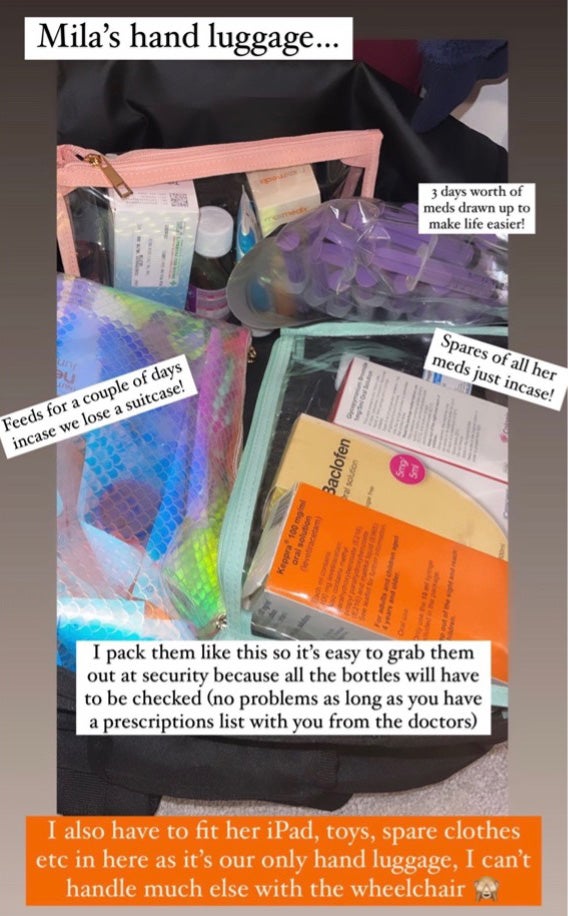
When packing your hand luggage, be mindful that you will have to take all liquids out at security. I pack everything in clear bags so it’s easy to access it all. I always pack a hand luggage bag with enough feeding supplies to last us a few days, again, in case a suitcase was to go missing. Think of every eventuality, I have some feeding equipment that I don’t use on a daily basis, but it’s needed when Mila is unwell or experiencing symptoms for example.
Travelling with all the tube feeding equipment can require a lot of luggage, so ensure you can manage it all, especially when travelling alone! Hand luggage rucksacks are very useful and can take a lot of luggage. Suitcases that fit inside one another for travelling home with less luggage is always handy. Use buggy/wheelchair clips for all the little things so your hands are free.
We’ve been to America, Canada, Lanzarote, Turkey, Morocco, Malta, Spain and there’s many more to come. As her feeding routines have become more complex, we have still made it possible to enjoy a holiday. Travelling is stressful, but not impossible and it’s worth every second! Good luck and happy travelling!
How do you find travelling with a child that is tube fed? Do you have any extra tips? We’d love to hear from you. Email us on talkingtubefeeding@uk.nestle.com.
Make sure to check out more tube feeding stories from other tube feeding families, next. These articles are full of wisdom and hope!

